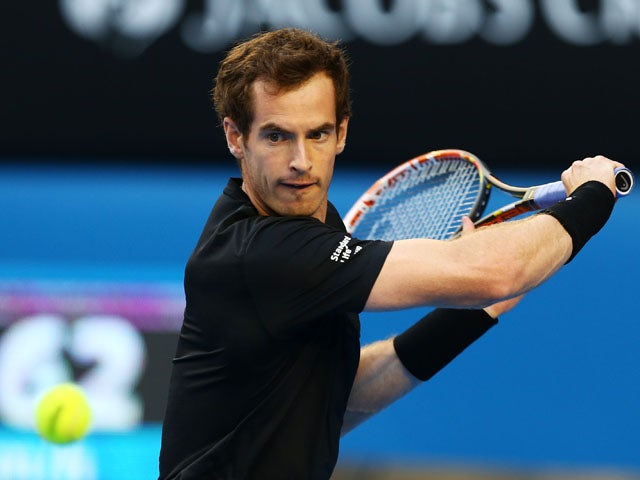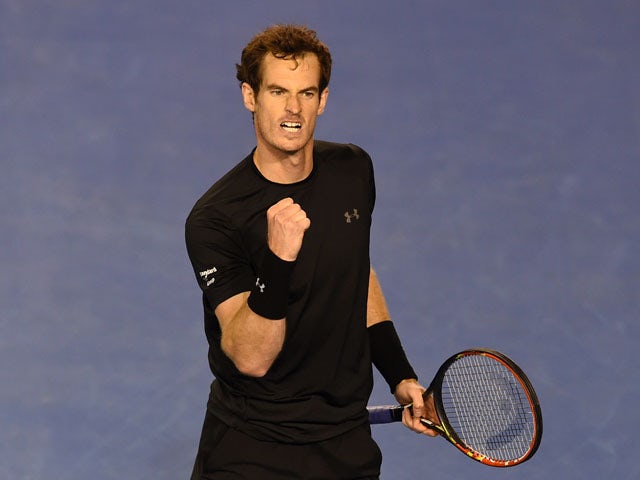Seventy-seven days ago, when Andy Murray suffered a humiliating 6-0 6-1 defeat at the hands of Roger Federer at the ATP World Tour Finals, many were quick to write off the British number one as a top contender, while Murray himself admitted that he needed to make alterations to his game in order to give himself the best possible chance of remaining competitive against the world's best.
Eyebrows were raised when Murray opted to end his long-time association with Dani Vallverdu in an attempt to freshen up his coaching setup, and in the process, hand more responsibility to Amelie Mauresmo. However, making bold decisions about his tennis is something that Murray is no stranger to, and while his choices were inevitably questioned, it was a move that the Scot wouldn't have made unless he had full belief in the upheaval.
While the thrashing from Federer provided plenty of time for contemplation, it also enabled the two-time major winner to reconsider his training methods. Murray has previously alluded to the decision to involve less track work and focus more on drills on a tennis court, but until he returned to match action at the World Tennis Championship - an exhibition event in Abu Dhabi - he would remain unaware whether the changes would pay off or leave him unprepared for the upcoming month in Australia.
Perhaps understandably, there was court-rust in his first outing against Feliciano Lopez, but a day later, against Rafael Nadal, Murray displayed not only the brand of tennis that has established him as one of the most exciting players in the world, he sent out a message to his rivals with a stunning dissection of a player, who despite being far from fully fit, is one of the greatest players to grace a tennis court. It can be argued that it was only an exhibition, but it was more than that to Murray. Where does he go if he can't defeat a player who has barely played a match in six months?
A 6-0 6-2 scoreline was arguably harsh on Nadal, but nevertheless, Murray arrived in Australia full of confidence, and after putting together a string of wins at the Hopman Cup alongside Heather Watson, expectations increased ahead of the opening Grand Slam of the year, a tournament that Murray has always performed well in, aside from 2008 when Jo-Wilfried Tsonga defeated him in the opening round on the way to a surprise appearance in the final.
 © Getty Images
© Getty Images
After the draw was made, it became evident that Murray had the opportunity to ease his way into the tournament. Indian qualifier Yuki Bhambri, albeit aggressive, was never going to force Murray to move out of second gear, and neither was Marinko Matosevic, who while unpredictable, doesn't possess enough consistency to trouble the best players. Portuguese player Joao Sousa has consistency in abundance, but he lacked the firepower of Murray's previous two opponents and that encounter was only ever going to end one way.
However, from the last 16 onwards, Murray was aware that significant tests awaited him as he strived for another appearance in the latter stages. The early exit of Federer opened up his quarter of the draw, but in doing so, the pressure on Murray's shoulders would have increased. Due to the greater depth at the top of men's tennis, added importance is placed on the ATP world rankings, and the Scot had an opening to accumulate enough points that could benefit him later in the year.
His fourth-round contest with Grigor Dimitrov was always going to be a physical affair. The Bulgarian matches Murray for movement and explosiveness off the ground, but there was a feeling that Murray's extra experience should give him the edge. That proved to be the case as Dimitrov blew the chance of taking the match into a decider by dropping five games in a row, a gift that Murray was only too willing to accept. Dimitrov has the potential to be a permanent fixture in the top 10 for years to come, and it could potentially be important down the line that Murray halted his development.
Next in line was the great Australian hope, Nick Kyrgios. The 19-year-old was riding the crest of a wave after becoming the first man since Federer to reach two Grand Slam quarter-finals at the same age, and in front of a raucous crowd, Murray's mental strength and concentration would be tested to the full. But unexpectedly, or perhaps expectedly, depending how much you rate him, Murray made relatively light work of Kyrgios. The turning point of the match came in a second-set tie-break in which Kyrgios's exuberant celebrations at 4-3 would have caught the eye of the Brit. Five points later, Murray was two sets ahead.
Kyrgios made a mistake in engaging with the world number six - a lesson learned during the early stages of a blossoming career - but it was a similar mistake that went a long way to Tomas Berdych blowing a first-set lead over Murray in Thursday's semi-final. Tensions had already been running high during a 75-minute first set which Berdych won, but as the two players passed at the net, the Czech player muttered "well played, Tomas". The comment didn't go unnoticed by Murray, who voiced his displeasure to the umpire, but at the same time, a spark had been created inside Murray, just at a time when Berdych needed him to remain emotionally uninvolved in the match. Two hours and 10 minutes later, Berdych had won just eight more games and lost the match in four.
 © Getty Images
© Getty Images
That victory on the Rod Laver Arena has capped 10 days in which all parts of Murray's repertoire have made an appearance. In six matches, he's served 65 aces - something that wouldn't have been possible without tinkering with his delivery during the off-season - while he has broken serve on 34 occasions, which is nine more times than anyone else. He's won 78% of points behind his first serve, and somewhat surprisingly given the criticism it receives, he has won 58% behind his second. He is also some way in front on the first-serve and second-serve return points. Novak Djokovic and Stanislas Wawrinka still have to play their semi-final, but in general, Murray is matching everyone in all areas of the game.
The improvement will be down to a number of factors, but the calming influence of Mauresmo is one that shouldn't be overlooked. The development of Murray's game has come from working with several coaches - not just as a result of Ivan Lendl, as some may have you believe - and the freshness and new perspective that the Frenchwoman offers is starting to be taken on board by Murray. Like every relationship in sport, there is a transitional period that must be undertaken before improved results can be found, and although many will focus on the Federer defeat, Murray ended 2014 on the front foot because Mauresmo had helped him achieve his goal for the second half of the year - making finals and winning tournaments.
Murray has confidence in Mauresmo's knowledge of the game and has rarely been shy in acknowledging the influence of the former women's world number one. He has always backed his latest coach, but his praise for Mauresmo at the end of his success over Berdych was a way of silencing the doubters that have criticised his strategy moving forward. The journey is far from over and Murray will be as motivated as ever to add a third Grand Slam trophy to his collection, but he's gone a long way to overcoming the doubts that he would have experienced since his return from back surgery and more recently, his 56-minute capitulation to Federer in London.
Whoever Murray faces in the final, he will be the underdog. Djokovic is by far and away the best player in the world while Wawrinka, last year's champion, has won his last five sets against the British number one, including his demolition of the Scot in their US Open quarter-final in 2013. But maybe being the underdog is something that will inspire Murray on Sunday. He's overcome a number of personal goals over the past six months, but since winning Wimbledon, he's yet to prevail in a match where he has been the clear underdog. Can he complete the turnaround after back surgery and a temporary loss of complete faith in his ability? That answer will come in three days' time.








